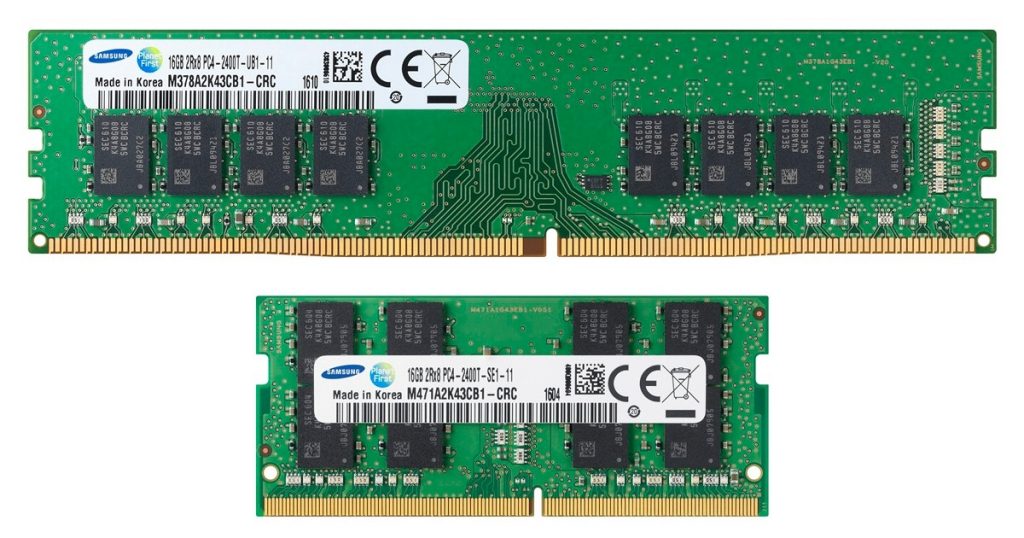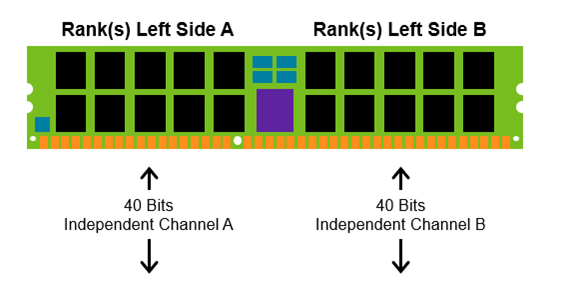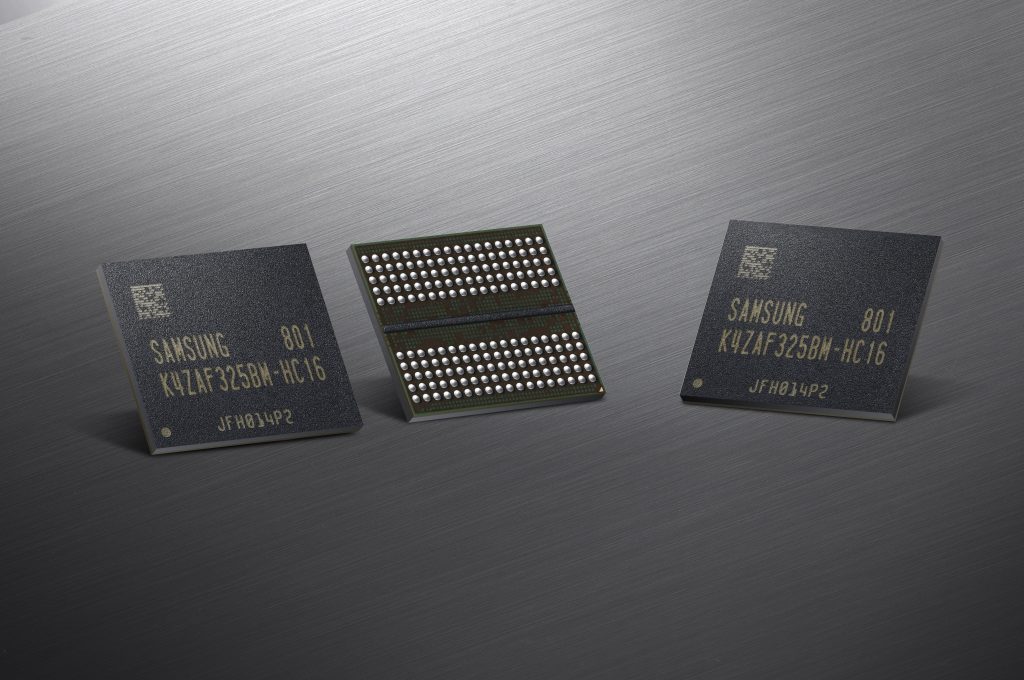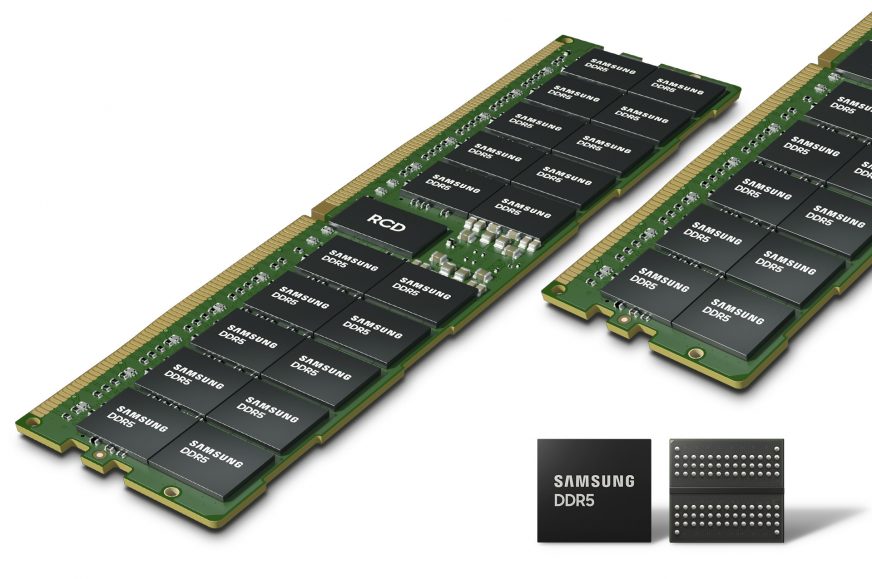DDR6, GDDR6+ and GDDR7
DDR5 memory modules for PCs have arrived on the market only recently so their replacement should be many years away (the span between the introduction of DDR4 and DDR5 has been more than seven years). But Samsung, as one of the main memory modules producers, has now announced more distant plans for the successors of the DDR5 memory (DDR6), but also new graphic memory, to replace GDDR6 and GDDR6X at the Tech Day 2021 conference.
Samsung has not stated this as an official information and has forbidden taking pictures or copying the displayed slides, however the attending German web ComputerBase has closely mapped the information.
DDR6: memory running at up to „17,0GHz“
DDR6 should be a major upgrade in the field of RAM technology. The goal is again to double the so-called effective frequency (of course the actual frequency does not get this high). This doubled “effective frequency”, or the transfer rate per bit of bus width will then translate to doubled memory bandwidth.
Standard types of DDR5 modules made according to the JEDEC specifications are currently expected to eventually run on DDR5-6400 (which in itself is twice the rate of the DDR4-3200). Overclocked modules using XMP 3.0 profiles should, according to current estimates, reach effective clocks of up to about 8500 MHz (DDR5-8500).
Compared to that, the DDR6 is supposedly expected to reach an effective speed of 12 800 MHz (DDR6-12800) in the case of the mentioned modules running with the standardised JEDEC specifications. A setup with two modules and therefore and 128 bit width, should accordingly posses a theoretical bandwidth of almost 205 GB/s, something currently achieved only by server CPUs (it is about the level of bandwidth offered by a 256 bit memory controller of the Apple M1 Pro CPU, which is a very exceptional design in the PC space in this regard). This will likely be a the higher bin of standard JEDEC speeds that we will reach only later in the lifetime of DDR5. Similarly to how the JEDEC specified DDR5-6400 modules will only come later on and the technology is starting with a DDR5-4800 standard, the DDR6 technology will also likely see its introduction at a lower (effective) frequency. It might be DDR6-9600, which would be twice the (effective) frequency of the current DDR5-4800, but this is only our speculation. A PC with a 128 width using two DDR6-9600 modules could achieve a theoretical bandwidth of about 154 GB/s.
Overclocked modules, likely using a type of XMP profiles again (and a voltage increase), will also enable roughly the twice the effective frequency of DDR5 and thereby double the bandwidth, according to Samsung estimates. Such modules could prospectively rise to an effective rate of 17 000 MHz (DDR6-17000). This would allow for a theoretical bandwidth of up to 272 GB/s.

Keep in mind that these are unofficial projections at the time and the actual future results might differ (and might even be better). Of course such memory modules are still distant with their development progress being in relatively early stages at this moment. The DDR6 will likely reach the market only in a couple of years. Should the launch cadence from the predecessor again be about seven years, they might not arrive sooner than the year 2028. However an earlier start (e.g. 2026, or 2027) might also be possible. This will depend on the progress speed of the standardisation and on how much demand will there be for a greater RAM bandwidth in the computer industry.
A module will consist of four independent subchannels
Beside the hints on the frequencies that the memory modules producers are aspiring to achieve, some other changes planned for these memory modules have also been imparted. Firstly, the DDR5 should use four times as many (64) memory banks when compared to the DDR4.
The division of a single module (with a 64 bit width) into multiple channels, capable of interlacing and independent accesses in order to increase the bandwidth, should also undergo further development. This has begun with the splitting of the DDR5 module into two 32 bit channels (this is why CPU-Z might report a “quad-channel” configuration when using an Alder Lake CPU). For the DDR6 a further division is reportedly planned – the module would have as many as four channels. With preserving the 64 bit overall width of the module the single channel within the module will only be 16 bits wide.

These changes allow for a greater parallelism within a single module. This could provide some improvement in how much real bandwidth could be yielded from a given theoretical bandwidth (that is determined by the effective frequency). Within the same memory clock, a greater bandwidth could be extracted from a module with this kind of division.
GDDR7 will run at up to 32,0 GHz, yet to preceded by GDDR6+
Samsung has also confirmed plans for the next generation of graphic card memory from the GDDR series. And not just concerning GDDR7. Although that is featured on the roadmap, the immediate development work is currently conducted on an intermediate technology scheduled for an earlier introduction to the market. Therefore the GDDR7 is still a quite distant matter.
Samsung has stated that it is developing a memory called GDDR6+, seemingly an intermediate development between the new GDDR7 technology and the currently used GDDR6 standard. However this one should reach significantly higher clock rates: up to the effective 24.0 GHz (the actual rate will, of course, be much lower), which is a 50% increase when compared to the 16.0 GHz achieved by GDDR6 and a one-third increase when compared to special 18.0 GHz bins of GDDR6, which are currently not very widely used (so far it seems they are only in the special liquid cooled edition Radeon RX 6900 XT LC).

How exactly is such performance planned to be achieved, has not been revealed. But should the endeavour be successful, it would pose a strong competition for GDDR6X by Micron, which is currently used by Nvidia. It is theoretically possible that GDDR6+ is a similar solution, using PAM4 singalling (in which case the memory might also show a similar increase in power consumption as GDDR6X). It remains to be seen whether the GDDR6+ will become JEDEC standard and will be offered by other memory manufacturers as well, or whether it will be more of a non-standard vendor-specific solution like said GDDR6X and before that GDDR5X by Micron.
Hint: GPU Ampere has new GDDR6X memory on the PAM4 basis, we have the details
32 GHz at some point in the future
GDDR7 will likely not arrive until after this episode. Again it has not been revealed which technological tricks these memory modules could make use of. However they are reportedly planned to achieve approximately twice the speed in comparison with the GDDR6 – the “work-in-progress” estimate is an effective frequency of 32.0 GHz. Of course it is possible that a bonus version with e.g. 36.0 GHz will again follow eventually, similar to the 18.0GHz GDDR6 and 9GHz bins of GDDR5 previousl.
Memory with an effective frequency of 32GHz would logically enhance the bandwidth of graphic cards handsomely – a GPU with a 128 bit bus would suddenly have a bandwidth equal to current 256 bit GPUs fitted with a 16 GHz GDDR6; graphic cards like the Radeon RX 6900/6800 XT with a 256 bit bus would have a bandwidth of 1TB/s instead of the current 512 GB/s. This would pave the road to greater performance. The leap in gaming performance will still be quite significant even compared to the GDDR6X (or the GDDR6+) on Nvidia cards, of course.
Sources: ComputerBase, via: VideoCardz
English translation and edit by Karol Démuth, original text by Jan Olšan, editor for Cnews.cz
⠀
- Contents
- DDR6, GDDR6+ and GDDR7








